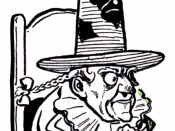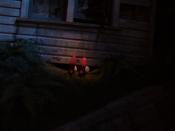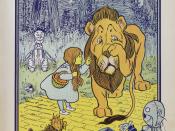"And my head I would be scratchin' while my thoughts were busy hatchin', if I only had a brainâ¦"Anyone with a brain can see that L. Frank Baum's The Wizard of Oz is a classic theatrical masterpiece, but it doesn't take much head-scratching to find that it can be used as a parable on populism as well. Its figurative characters, like Dorothy, the Scarecrow, the Tin Man, the Cowardly Lion, the witches, and even the monkeys and munchkins, and it's satirical metaphors, such as the original silver shoes, the yellow brick road, and Oz itself make it hard to believe that Baum's work was intended for the mere entertainment of children.
The four main characters, Dorothy, the Tin Man, the Scarecrow, and the Lion depict four of the most important people or groups of the time. Dorothy, a simple farm girl who just wants to go home, is described by Littlefield as "Miss Everyman", and represents the plucky naivety of the American people.
She is "â¦small and meek", and yet it is she that leads the others to seek their desires. Her role is similar to the role of our country at the time; our own conflicts (the Civil War and the expansion westward) caused us to better our standards (the advancement of technology in warships and weapons), therefore putting us on display for the world, and making others (like Britain, France, etc.) want to improve as well. Although Dorothy represents the naivety of the world, the Scarecrow is naïve in actuality. An image of the American farmer, the Scarecrow is less inferior and in fact more intelligent and shrewd than the rest of the bunch. A direct quote from the movie, "They come from miles around to eat my food and I can't even scare you awayâ¦",


